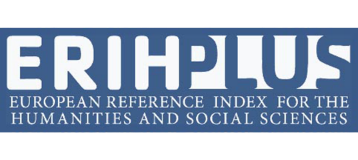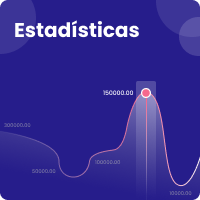Specifics of emotional reaction in adolescents and young adults: a psychophysiological study
Palabras clave:
Physiological-reaction, emotion, development, adolescence, self-regulationResumen
The passage from age to age depends on multiple cognitive and neurological developmental changes; for affective and social skills, adolescence has proven to be a critical age for making decision, the self-regulation, the monitoring and emotional-affective social analysis. The objective of the study was to compare emotional-affective response between adolescents and young adults. Methods: Subjects had to respond the Self Assessment Manikin (SAM) in a 5 option Likert type scale. Three different scales were presented: happy/unhappy, annoyed/excited, and controlled/in-control. Autonomic EKG, Skin Conductance, Temperature, and EMG response were measured. Results: No statistical differences were shown between age groups in autonomic reaction. The Behavioral response General Lineal Model (GLM) analysis showed significant difference in the subject’s responses to various situations, however non age differences were found. Data suggests a similar level of emotional valence recognition and autonomic reaction between adolescents and young adults. These findings can suggest similar autonomic reaction for both studied groups, which leads to the hypothesis about later development in affective processing in higher central nervous structures, but not for peripheral reaction.
Descargas
Referencias
Bradley, M., Codispoti, M., Cuthbert, B. & Lang, P. (2001). Emotion and Motivation I: Defensive
and Appetitive Reactions in Picture Processing. Emotion vol. 1, 276-298.
Bradley, M., Codispoti, M., Sabatinelli, D. & Lang, P. (2001). Emotion and Motivation II: Sex
Differences in Picture Processing. Emotion, vol. 1, No. 3, 300-319.
Bradley, M., Sabatinelli, D., Lang, P., Fitzsimmons, J., King, W. & Desay, P. (2003). Activation of the
Visual Cortex in Motivated Attention. Behavioral Neuroscience, vol. 117, No. 2, 369-380.
Bradley, M. & Lang P. (2007). The International Affective Picture System (IAPS) in the study
of emotion and attention. In J. A. Coan and J. J. B. Allen (Eds.). Handbook of Emotion
Elicitation and Assessment (pp. 29-46). Oxford University Press.
Burnett, S., Sebastian, C., Cohen, K. & Blakemore, S. J. (2011). The social brain in adolescence:
evidence for functional magnetic resonance imaging and behavioral studies. Neuroscience
and biobehavioral reviews, 35(8):1654-1664.
Cannon, W. (1927). The James-Lange Theory of Emotions: A Critical Examination and an
Alternative Theory. The American Journal of Psychology Vol. 39, No. 1/4 pp. 106-124.
Davis, M. (2000). The role of amygdala in conditioned and unconditioned fear and anxiety. En J. P.
Aggleton (Ed.) The amygdala (Vol. 2, pp. 213-287). Oxford, UK: Oxford University Press.
Davis, M. & Lang, P. (2003). Emotion. In M. Gallagher & R. J. Nelson (Eds.). Handbook of Psychology:
Vol. 3. Biological Psychology (pp. 405-439). New York: Wiley.
Davidson, R. (2003). Affective Neuroscience and Psychophysiology: Toward a Synthesis.
Psychophysiology, 40, 655-665.
Dresler, T., Meriau, K., Heekeren, H. & Van Deer Meer, E. (2009). Emotional Stroop Task: Effect
of a Word Arousal and Subject Anxiety on Emotional Interference. Psychological Research.
Vol. 73, 364-371.DOI 10.1007/s00426-008-0154-6.
Dywan, J., Mathewson, K., Choma, B., Rosenfeld, B. & Segalowitz, S. (2008). Autonomic and
Electrophysiological Correlates of Emotional Intensity in Older and Younger Adults.
Psychophysiology, vol. 45, 389-397. DOI: 10.1111/j.1469-8986.2007.00637.
129909-8391
julio - diciembre / 13
Ernst, M. & Hardin, M., (2010). Neurodevelopment underlying adolescent behavior:
aneurobiological model. In Zelazo, P. D., Chandler, M. & Crone, E. (Eds.). Developmental
Social Cognitive Neuroscience. (pp. 165-189). New York: Psychology Press, Taylor & Francis
Group.
Fanselow, M. (1994). Neural organization of the defensive behavior system responsable for fear.
Psychonomic Bulletin and Review, 1, 429-438.
Fowels, D., Christie, J., Edelberg, R., Grings, W., Lykken, D. & Venables, P. (1981). Publication
recommendations for electrodermal measurements. Committee Report Psychophysiology, vol.
18 No. 3, 232-239.
Gross, J. (2002). Emotion Regulation: Affective, Cognitive, and Social Consequences. Psychophysiology, vol. 39, 281-29. DOI: 10.1017.S0048577201393198.
Harmon, J. (2003). Clarifying the emotive functions of asymmetrical frontal cortical activity,
Psychophysiology, vol. 40, 838-848. DOI: 10.1111/1469-8986.00121.
Kluver, H. & P. C. Bucy. (1939). Preliminary analysis of functions of the temporal lobes inmonkeys.
Arch. Neurol. Psychiatry 42: 979–997.
Lang, P., Bradley, M., Fitzsimmons, J., Cuthbert, B., Scott, J., Moulder, B. & Nangia, J. (1998).
Emotional arousal and activation of the visual cortex: and fMRI analysis. Psychophysiology,
35, 199-210.
Lang, P., Bradley, M. & Cuthbert, B. (2008). International Affective Picture System (IAPS): Affective
Ratings of Pictures and Instruction Manual. Technical Report A-8. University of Florida,
Gainesville, FL.
March, A., Finger E., Schechter J., Jurkowitz I., Reid M., Blair R. (2010). Association for Child and
Adolescent Mental Health. The Authors. Journal of Child Psychology and Psychiatry.
DOI:10.1111/j.1469-7610.2010.02353.x
Morelen, D., Zeman C., Perry-Parrish C. & Anderson E. (2011). Children’s emotion regulation
across and within nations: A comparison of Ghanaian, Kenyan, and American youth,
British Journal of Developmental Psychology. DOI: 10.1111/j.2044-835X.2011.02050.x
130
Vol. 8 - Nº 2
Musser, E., Backs, R., Schmitt, C., Ablow, J., Measelle, J. R. & Nigg, J. (2011). Emotion Regulation
via the Autonomic Nervous System in Children with Attention-Deficit/Hyperactivity
Disorder (ADHD). J Abnorm Child Psychol (2011) 39:841 – 852 DOI 10.1007/s10802-
011-9499-1.
Sabatinelli, D., Bradley, M., Fitzsimmons, J. & Lang, P. (2005). Parallel amygdala and inferotemporal
activation reflect emotional intensity and fear relevance. NeuroImage 24, 1265-1270.
Sabatinelli, D., Bradley, M., Lang, P., Costa, V. & Versace, F. (2007). Pleasure rather than salience
activates human nucleus accumbens and medial prefrontal cortex. Neurophysiol 98:
1374-1379.
Solovieva, Y., Villegas, N., Jiménez, P., Orozco, M. & Quintanar, L. (2001). Alteraciones de la
Esfera Afectivo-Emocional en Diferentes Tipos de Afasia. Cuadernos Hispanoamericanos
de Psicología, Vol. 2, No. 1, pp. 63-74.
Steinberg, L. (2005). Cognitive and affective development in adolescence. TrendsCogn. Sci. 9, 69–74.
Tottenham, N., A. Hare, T. & Casey, B. J. (2011). Behavioral assessment of emotion discrimination,
emotion regulation and cognitive control in childhood, adolescence and adulthood.
Frontiers in psychology, 2:39. DOI: 10.3389/fpsyq.2011.00039.
Uljarevic, M. & Hamilton, A. (2012). Recognitivon of emotions in autism: a formal meta-analysis.
Autism development disorder. DOI: 10.1007/s10803-012-1695-5.
Descargas
Archivos adicionales
Publicado
Número
Sección
Licencia

Esta obra está bajo una Licencia Creative Commons Atribución-NoComercial-















